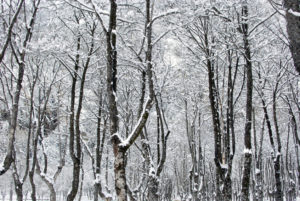
It’s no secret that winter weather can wreak havoc on your home. But it turns out that cranking up the heat might not be the best solution.
According to UK home interior specialists at Hillarys, you can reduce your risk of frozen pipes by keeping your heating on low at a constant temperature. While you’re away on vacation or traveling, the specialists said, it’s recommended to leave your heating on at 55 degrees at the very least, especially during sub-zero temperatures.
Temperature fluctuations are bad for your pipes
Although turning your heating down at night or while you’re away from home can lower your energy bills, it can also damage your plumbing. Temperature fluctuations can cause the water in your pipes to expand and contract, which puts your pipes at greater risk of cracking or bursting.
At least 10% of households in the U.S. have plumbing leaks that can waste up to 90 gallons of water per day. That means the energy costs you may be saving by turning your heat down at night could be hiking up your water bill instead.
Keeping your indoor heating down doesn’t mean you need to be uncomfortable, though. Even the minimum indoor workplace temperature is 68 degrees by OSHA standards. Choose a lower indoor temperature that’s just comfortable enough and compensate on chillier days by wearing a sweater instead of turning up the heat.
Preventing frozen pipes
Although frozen pipes are most common in the Northeast and Midwest, pipes can freeze in all regions of the country. They can even freeze during the summer if overnight temperatures fluctuate enough.
Here are a few ways you can keep your pipes from freezing when the temperatures drop:
- Insulate your home. There’s a chance your home isn’t insulated enough if you need to crank up the heat during the day to stay warm. At least 40% of heat loss in a house is caused by heat escaping through the attic. Insulate your attic, windows, and pipes to keep your home’s heat inside the house so you can keep your indoor temperatures lower and constant.
- Insulate your pipes. Putting an insulated sleeve on your pipes, especially in the coldest parts of your home, will help them maintain temperatures of 32 degrees to prevent freezing.
- Have your plumbing serviced twice a year. Winter shouldn’t be the only time you think about your plumbing system. Pipeline corrosion alone costs the U.S. over $9 billion every year. Proper maintenance can help to keep your pipes in good shape so even if they do freeze during the winter they’re less likely to crack and burst.
- Keep your cupboards open. It’s important to keep the cupboards under your sink open to let the warm indoor air reach your pipes. Keeping doors open around your house also helps to keep warm air circulating, which not only reduces your risk of freezing pipes but also lowers energy bills.
- Run a tiny bit of water. During those icy cold days, it’s a good idea to run the tiniest bit of water from faucets that are located in the coldest parts of your home. Running a thin stream of water helps to keep the pipes open to prevent them from freezing without costing you a small fortune on your water bill.
Frozen pipes are not only frustrating but they can also cost you a pretty penny if they damage your plumbing by cracking or bursting. By taking preventative measures and keeping your home’s heating on low this season, you can keep your own pipes from freezing even in sub-zero temperatures.




